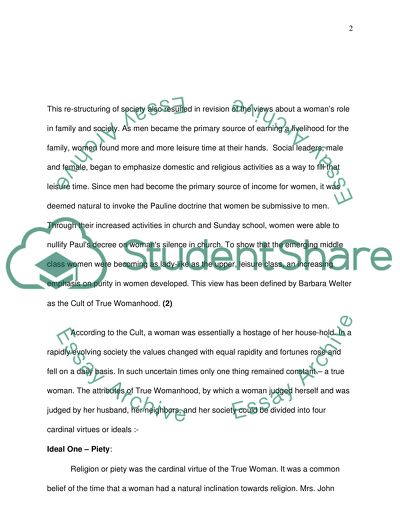Cite this document
(“Cult of Domesticity Essay Example | Topics and Well Written Essays - 2000 words”, n.d.)
Retrieved from https://studentshare.org/history/1511965-cult-of-domesticity
Retrieved from https://studentshare.org/history/1511965-cult-of-domesticity
(Cult of Domesticity Essay Example | Topics and Well Written Essays - 2000 Words)
https://studentshare.org/history/1511965-cult-of-domesticity.
https://studentshare.org/history/1511965-cult-of-domesticity.
“Cult of Domesticity Essay Example | Topics and Well Written Essays - 2000 Words”, n.d. https://studentshare.org/history/1511965-cult-of-domesticity.


